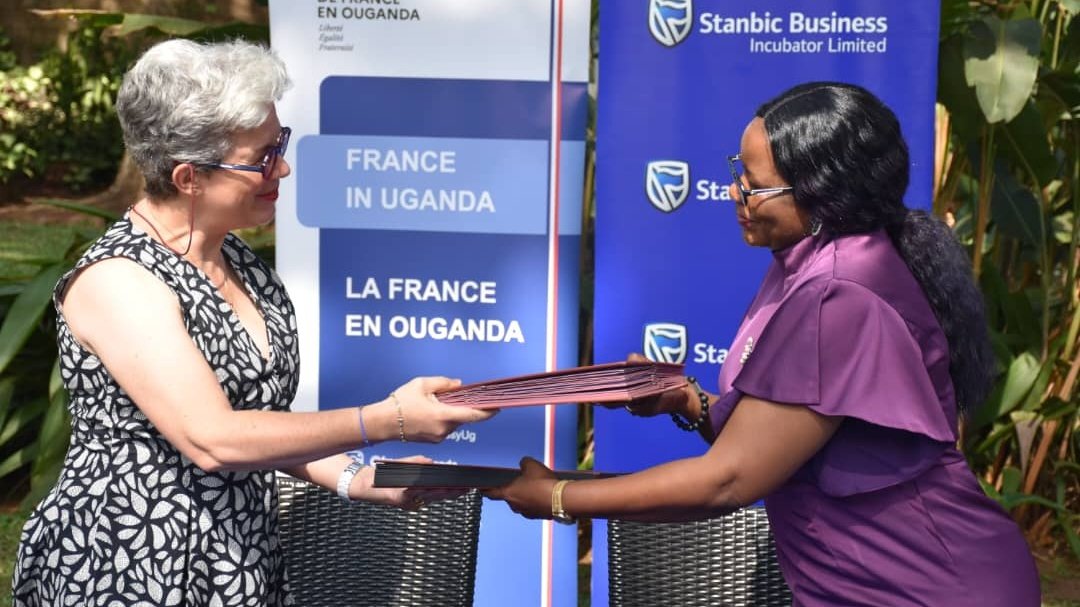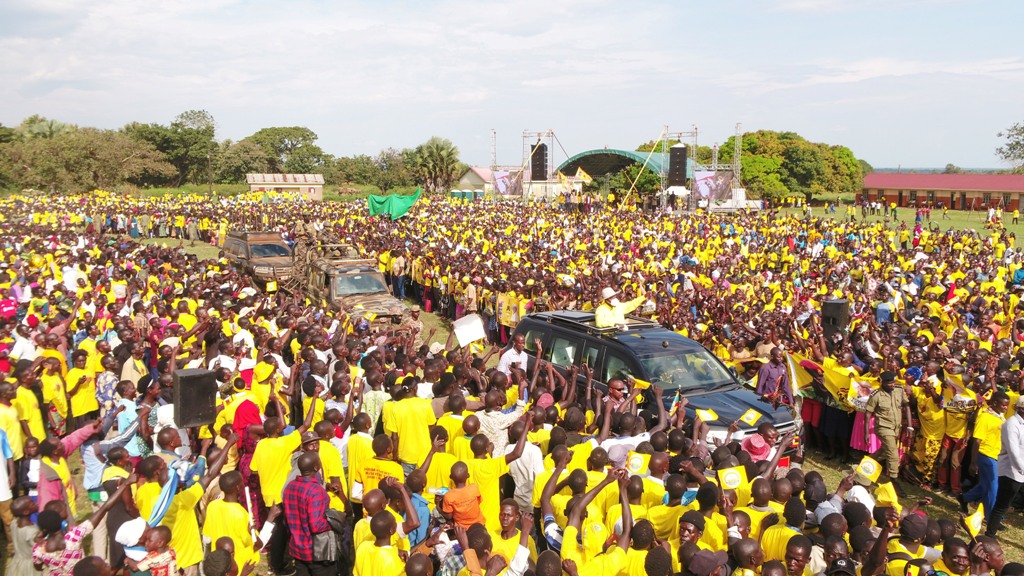Museveni tells Ugandans to fight poverty through dairy farming, four acre-model
In order to get quick economic gains from dairy farming, Museveni advised that the small and medium holders should go for Friesian cattle.

President Yoweri Museveni has told Ugandans that it is very possible to fight poverty if they get involved in lucrative commercial agriculture such as dairy farming and the four-acre-model farm strategy.
To say this, President Museveni was Wednesday presiding over the International Women’s Day celebrations at Sanga Playground, Kiruhura District.
Every year on 8th March, International Women’s Day is celebrated to commemorate and honour women’s accomplishments, raise awareness about gender disparities and discrimination, as well as promote global support for women.
This year’s celebrations ran under the theme: “Equal Opportunities In Education, Science & Technology for Innovation and a Gender Equal Future”.
According to the President, in December 1966, they (student group) launched an anti-nomadism campaign in Kiruhura and they moved from kraal to kraal educating people, about the dangers of nomadism and the pre-capitalist traditional economy of only working for the stomach (okukorera enda yoonka).
“Many people listened to our message and stopped nomadism, fenced the land they occupied traditionally, dug bigger wells, started spraying against the ticks, stopped bush-burning and engaged in crop farming (especially bananas), in addition to cattle rearing.
“The calf mortality radically reduced, and their herds multiplied. Between 1966 and 1986, their herds multiplied and had more food security but then, one question remained unanswered.
This is the issue of the correct enterprise in terms of maximizing homestead incomes, taking into account the size of the family land,” said President Museveni.
In order to get quick economic gains from dairy farming, Museveni advised that the small and medium holders should go for Friesian cattle.
“What have been the results? Big transformation. Milk produced in Uganda has gone from 200 million litres per year to now 3.22billion per year and Uganda’s processing companies have increased from just 01 company (DCL) with a processing capacity of 60,000 litres per day in 1986, to currently 145 companies with a processing capacity of 2.89 million litres per day. These are employing mainly women and youth,” he boasted.
The President further disclosed that Uganda’s dairy sector is now valued at US$3.8billion, the export portion of which brings in US$106.2million per year.
“We are aiming at 20 billion litres. You will not get out of poverty through ranching but you could get out of poverty through dairy farming,” President Museveni said.
Adding: “The whole of the cattle corridor has got this message and have embraced it. Parts of the districts involved are found in Isingiro, Kashaari, Kiruhura, Kazo, parts of Ibaanda, Lyantonde, parts of Rakai, Ssembabule, Kyegyegwa, parts of Gomba, parts of Mubende, Kiboga, Kyenkwaanzi, Nakaseke and Nakasongola.”
After fighting the successful war against nomadism in 1995, Gen. Museveni asserted that he then embarked on a country-wide tour lecturing Ugandans about the four (4) acre-model strategy aimed at fighting poverty and improving household incomes.
The four acre-model entails putting coffee in one acre, fruits in the second acre, pasture for zero grazing Friesian cattle in one acre and food crops in one acre (bananas, cassava, etc). In the backyard, those interested could put poultry, a piggery and those near water, would do fish farming.
“These are activities that have got a huge global market that we have long ago confirmed and have a good return per acre, per annum. With these, we cannot go wrong,” the President remarked.
“The four-acre model is part of what we call intensive agriculture. It is designed to benefit the country but particularly to benefit the smallholder. There are other products that the country needs, but do not fit in intensive agriculture. They come in what is called extensive agriculture ─ getting small income per acre but doing it on a big scale. This is where maize, sugar-cane, cotton, ranching, tobacco, etc., etc., come in. While the Parish Development Model (PDM) deals with the 4-acre model, Uganda Development Bank (UDB), will handle the extensive agriculture.”
President Museveni also explained that when the families get out of poverty through commercial farming, manufacturing, services, ICT ─ the four sectors ─ it is easier to address all the other marginalized groups including the women.







